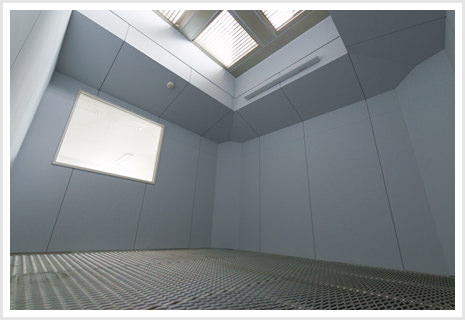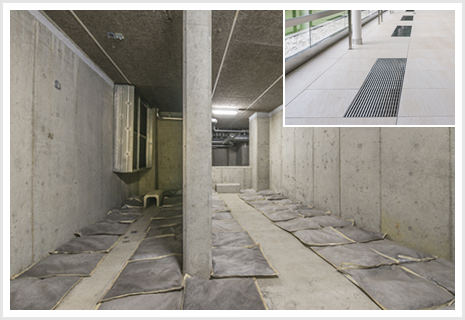Daiwa House Industry's Central Research Laboratory (the location of the Nobuo Ishibashi Memorial Museum) offers guided tours and hands-on experiences to the general public relating to the laboratory's R&D in the field of next-generation energy technology. For this purpose, the laboratory has acquired certification from the prefectural government of Nara as a "next-generation energy park."
Environmentally symbiotic housing
The design of the museum building is based on the concept found in anthills in desert areas of Africa and other continents, making use of natural elements such as wind, sunlight, and water to be optimally eco-friendly.


Solar chimney
The glass-covered solar chimney on the museum's roof causes air convection by means of passive solar energy, drawing warm air upward to the roof, where it exits to the outside through the exhaust ventilation outlets.

Earth tube
The earth tube, also known as an earth-air heat exchanger, is located in the basement. Outside air is taken into the building from the air-intake openings in the north wall, and heat exchange is conducted with the earth below the building, thus pre-cooling the museum's interior air in the summer and pre-warming it in winter. The fresh air thus guided into the building is then drawn upward to the roof.

Roof greening (sedum sod)
Part of the museum's roof surface is covered with various types of greening systems, from a roof garden designed for housing to sedum sod cover designed for offices and other commercial buildings. Rain falling on the roof is led into a tank, where it is stored and used to water the rooftop vegetation when needed.

Photovoltaic panels
Photovoltaic panels are also installed on a large section of the museum roof. The power generated is stored in a battery unit installed in the grounds outside the building. In principle, this photovoltaic system is capable of powering all the museum's lighting equipment.







